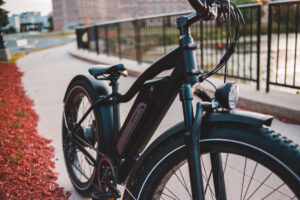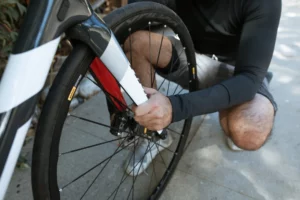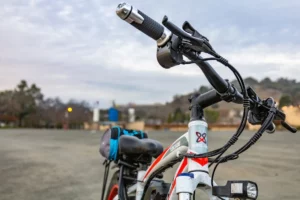Today bike theft looms as a major concern for cyclists globally, thus choosing the anti-theft bike lock is paramount. To secure your bike effectively, it’s crucial to grasp the specific features and functions of different lock types. This article will explore 4 common types: U locks, cable locks, chain locks, and folding locks. Are you ready? Let’s go-getting.
Common Types of Bike Locks
A bike lock is a security device to prevent theft by securing a bicycle to a fixed object, such as a bike rack or pole, typically using a combination or key mechanism. It is an essential accessory when ones secure a bicycle. To enhance security level, it comes with various types. In this part, we will learn the distinctions between U locks, folding locks, chain locks, and cable locks, which are crucial for cyclists looking to safeguard their bikes effectively.
U Lock
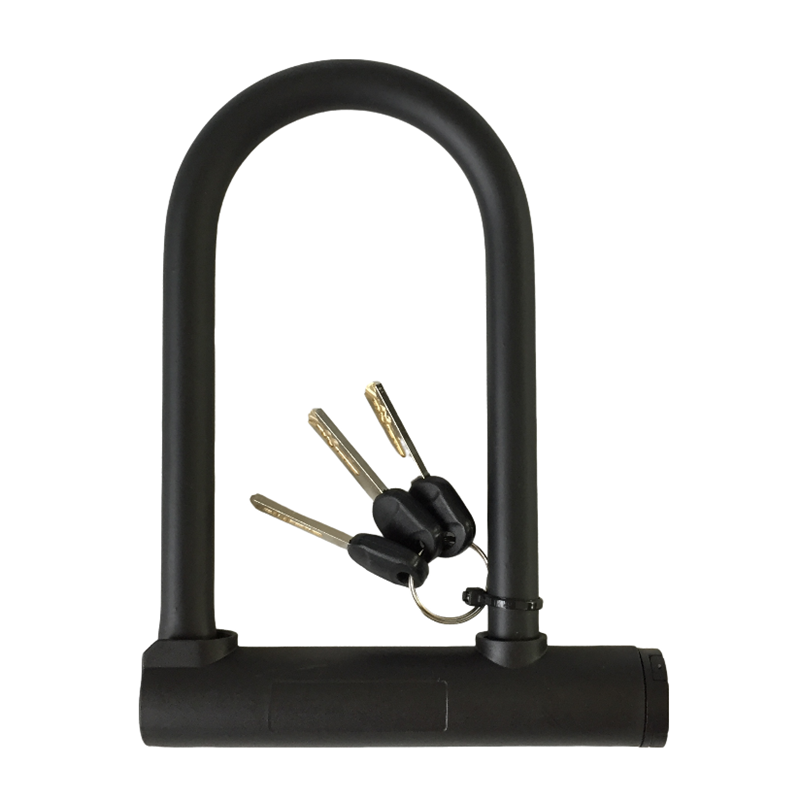
U-locks, also known as U-shaped locks or shackle locks, consist of a rigid metal U-shaped bar attached to a crossbar locking mechanism. The name “U-lock” is used more commonly in America, while some UK bike lock manufacturers prefer to call it a D-lock or D-shaped lock because it features a horseshoe-shaped design. The design of these locks provides a high level of security due to their hardened steel construction and resistance to cutting tools. Some premium U-locks feature dual-locking hardened shackles, adding an extra layer of protection against theft attempts.
Recommend Size to Apply
U-locks can secure the frame and wheel to an immovable object such as a bike rack or pole, particularly in urban areas with higher-rated theft. Regularly, a medium-sized U-lock with a shackle diameter of around 12-15mm is large enough; while if you want to lock a scooter or a motorcycle, a 15-18mm and 18mm or more may be better.
Pros and Cons
| Pros | Cons |
| ● Compact and portable design for convenient use ● High-security level due to the robust construction ● Resistant to cutting tools and leverage attacks ● Versatile application for securing different parts of the bike | ● Relatively heavy compared to other lock types ● Limited flexibility when securing bikes in unconventional locations |
Cable Lock
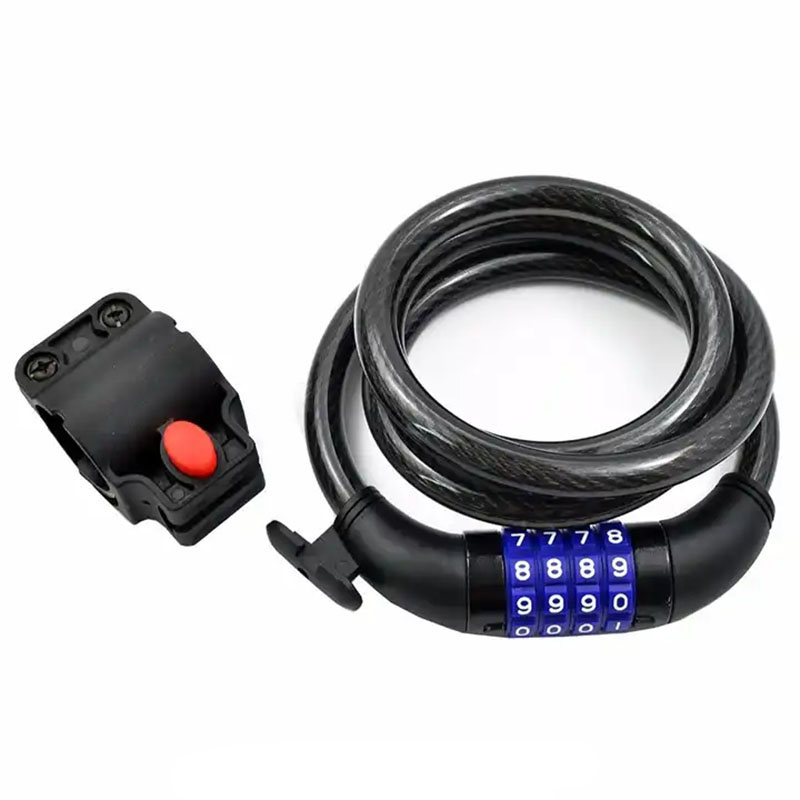
Cable locks consist of strong, flexible cables made from braided steel or reinforced materials. They often come with an integrated key or combination locking mechanisms, offering convenience during use. However, they are best utilized as secondary locks rather than standalone security measures.
Recommend Size to Apply
Uncuttable cable locks are suitable for securing accessories like helmets or saddles in low-risk environments. Usually, a medium-length cable lock around 10-12mm thickness adequately secures bicycles or scooters to bike racks or posts. However, a cable lock alone may not be wise to lock the motorcycle, thus you should combine it with secondary locks or heavy-duty bike locks.
Pros and Cons
| Pros | Cons |
| ● Visual deterrent ● Lightweight and highly portable for on-the-go cyclists ● Flexible enough to secure multiple bike components simultaneously ● Ideal for short-term stops in low-risk areas | ● Prone to being easily cut by thieves using basic tools ● Not recommended as standalone security measures in high-theft areas ● Careless lock placement may leave gaps, enabling leverage or cutting attacks between the bike and the object/stand ● Inattentive lock use when exposing chain links may damage bike paintwork without protective or worn plastic sleeves |
Folding Locks
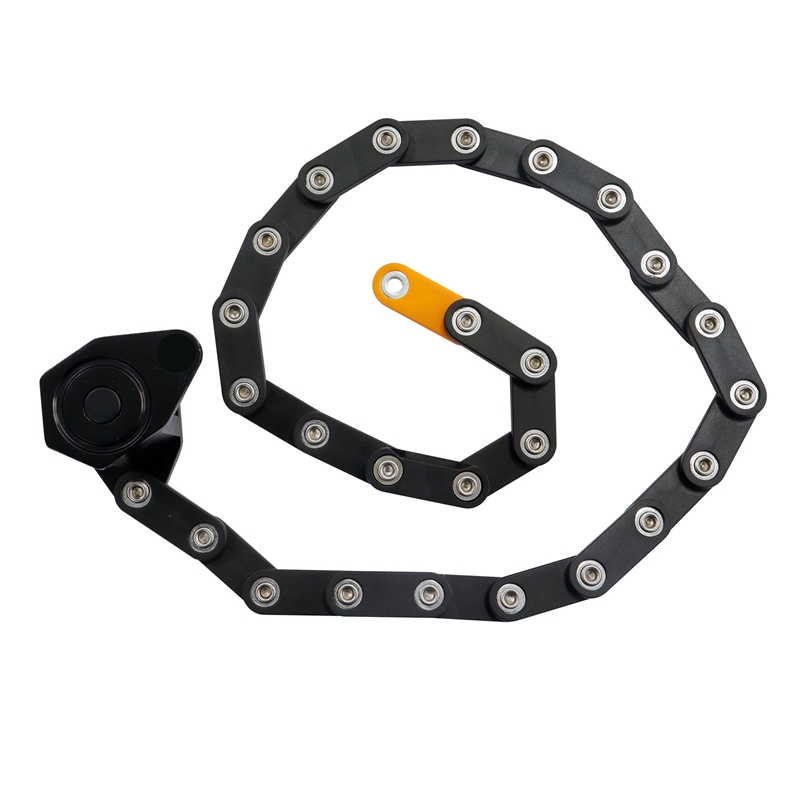
Folding locks for cycles boast a foldable design, with multiple segments that unfold to create a secure locking mechanism, ensuring compact storage and portability. Comprises hardened steel or alloy materials, they are durable and resistant to cutting tools. Designed to fit various bike frame sizes, they secure the bike to an immovable object.
Recommend Size to Apply
Regularly, a medium-sized folding lock with multiple steel bars and a total length of around 80-100cm is suitable for securing bicycles or scooters to fixed objects. But if you want to lock the motorcycle, you may only serve it as an additional choice due to its size limit. It would be better to combine it with heavier-duty locks.
Pros and Cons
| Pros | Cons |
| ● Portable and lightweight ● Versatile locking options ● Resistant to bolt cutters ● Suitable for various bike frame sizes | ● Limited length compared to traditional locks ● May require extra care to prevent jamming ● Higher cost than basic cable locks ● Some models may be prone to corrosion over time |
Chain Locks
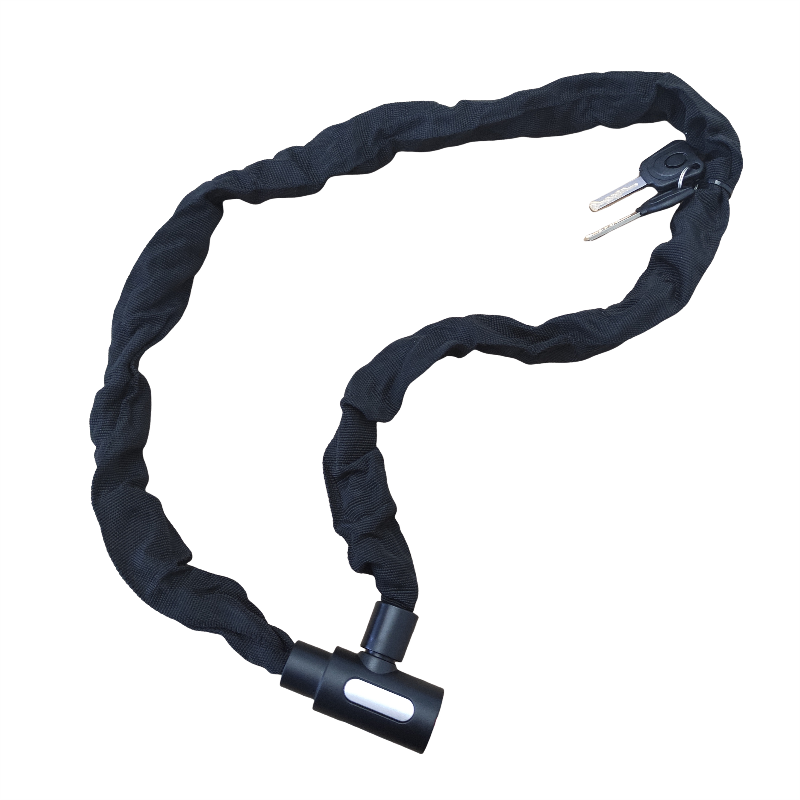
A chain lock, commonly made of hardened steel for the chain and brass or steel, is a security chain device for bicycles, motorcycles, and other valuable items. It typically consists of a steel chain with interlocking links and heavy-duty padlocks with weather-resistant coatings. Features include durability, resistance to cutting and tampering, and flexibility for securing various objects.
Recommend Size to Apply
Generally, a security chain lock around 90-120mm in length and 8-12mm in thickness is suitable for securing bicycles to fixed objects such as bike racks or poles. Similar to a bicycle in length, a thicker chain with 10-14mm may be better for scooters. A chain lock at least 120cm or longer and 12-16mm thickness accommodates the larger size of motorcycles.
Pros and Cons
| Pros | Cons |
| ● Durable and resistant to cutting or tampering ● Offers a visible deterrent to potential thieves ● Provides flexibility in securing different objects in various locations | ● May be cumbersome to carry ● Requires a suitable anchor point for effective use ● Weather exposure can cause deterioration over time |
Comparison with Four Types of Bike Locks
You have a comprehensive understanding of folding locks, U-locks, chain locks, or cable locks, but do you know what is better? Let’s explore their material composition and locking mechanism to determine the most effective bike lock for your needs.
Material Strength
U-locks or D-locks for cycles, such as TP-610866, boast hardened steel with a mounting bracket to resist cutting tools and brute force attacks, eliminating many potential thieves.
On the other hand, folding locks feature hardened steel or alloy, ensuring a sturdy barrier against theft attempts.
Chain locks like TP-610606 are typically made of hardened steel, providing high tensile strength and resistance to cutting tools like bolt cutters or saws. Besides, some combination chain locks may feature additional reinforcement layers or alloys to enhance durability and security.
However, while convenient, anti-theft cable locks often compromise material strength, making them more vulnerable to cutting attacks and reducing their effectiveness in high-risk environments.
Locking Mechanism
U-locks or D-locks utilize a straightforward yet effective locking mechanism, with a rigid shackle or a lock key that locks into a crossbar. This design provides a secure anchor point. For instance, the affordable bike lock TP-610853 provides 3 spare keys to avoid missing keys, ideal for students or commuters in lower-risk areas.
Folding locks, on the other hand, employ a series of interconnected segments that unfold to create a secure locking mechanism. For instance, TP-610925 features 27 interconnected nodes and a digital combination lock, allowing cyclists to secure their bikes in various positions.
Chain locks commonly use padlocks with either key or combination mechanisms. Their padlocks boast shackles and anti-drill plates to resist attacks, and advanced models may incorporate disc detainer or cylinder locks for added security against picking or manipulation.
While convenient due to their flexibility, cable locks offer a less secure locking mechanism. However, some wire cable locks for motorcycles with combination locks like TP-610926 make up for the key flaw (a pen may pick the key lock). They allow you to unlock the bike with only 3 digital passwords.
How to Choose the Right One for Bike Security?
When selecting the best bicycle lock for your security needs, several factors should be considered to ensure comprehensive protection against theft.
Assess Your Security Needs
The choice of bike lock type should be tailored to the specific security requirements dictated by the location. In urban areas with high rates of bike theft, a robust and resilient lock such as a U-lock or D-lock is imperative to safeguard valuable bikes effectively. On the other hand, in rural settings where theft occurrences may be less frequent, cyclists may opt for a more versatile and lightweight option like a chain lock, a cable lock, or a folding lock without compromising security.
Balance Safty and Convenience
Cyclists often encounter scenarios where they need to secure their bikes multiple times throughout the day, such as during work commutes or errand runs. Therefore, it is equally important to strike a balance with convenience when choosing a bike lock. If you lock the bike once or twice a day, a combination chain lock with D-lock or U-lock will be ok. But if you lock the bike over 3 times, an individual D-lock, U-lock, or folding lock will be better.
Estimate Bike Value
High-value bicycles warrant stronger and sturdier locks that offer enhanced protection against theft attempts. Conversely, lower-value bikes may suffice with moderately secure locks that provide adequate deterrence against opportunistic thieves.
Conclusion
Throughout this exploration of bike locks, it becomes evident that each lock type possesses unique features and applications designed to address specific security concerns.
✓ D-locks or U-bolt bike locks stand out for their robust construction and resistance to cutting tools, making them ideal for high-risk urban settings.
✓ Then folding locks offer versatility and security benefits, catering to cyclists seeking compact yet sturdy locking solutions.
✓ Besides, chain locks offer durability with hardened steel construction, ideal for urban security needs. It resists cutting tools while providing versatile object protection.
✓ Meanwhile, cable locks provide lightweight and flexible options for securing accessories in low-risk areas but are not recommended as standalone security measures.
Therefore, you should source bike locks from some good bike lock brands or sell them based on individual needs, enabling cyclists to mitigate the pervasive threat of bike theft and enjoy greater peace of mind during their rides.
FAQ
1. Which lock is unbreakable?
No lock is truly unbreakable, as any lock can be compromised given enough time, tools, and determination. However, certain locks, like high-security padlocks with hardened steel bodies and complex key systems, offer significant resistance to picking, cutting, and other tampering methods.
2. What level of security are bike locks?
Bike locks are graded on a scale of bronze, silver, gold, and diamond, with higher ratings indicating higher security levels. The levels are based on how long it would take a thief to break the lock:
1. Bronze: Low/medium security, designed to prevent opportunistic crime
2. Silver: Medium/high security, designed to prevent a more determined attack
3. Gold: Maximum security, designed to prevent dedicated attacks
4. Diamond: Ultimate security, designed to prevent the most destructive attacks


